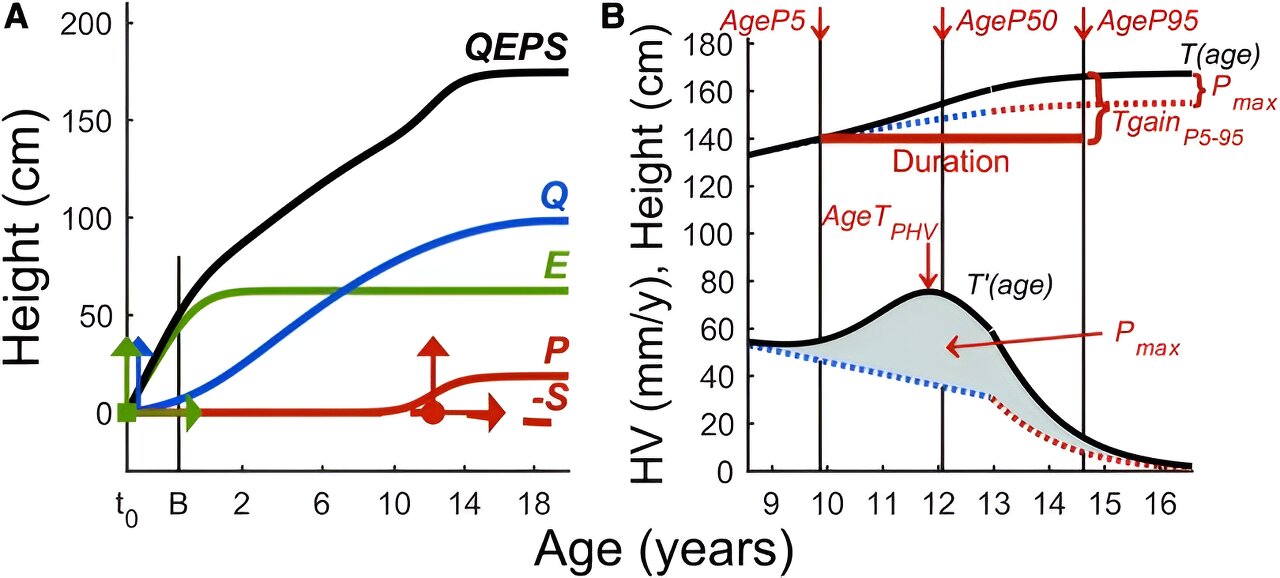
There is unexpectedly large variation in height growth in girls after their first period. Every second girl grows either more or less in length than the 6–8 centimeters that is considered standard. This has been shown in a study conducted at the University of Gothenburg.
The aim of the study, published in the journal Frontiers in Pediatrics, was to investigate how the timing of the first menstruation is related to the subsequent height growth in girls and the factors behind it.
The study included 793 healthy women in the Gothenburg region and Halland in southwest Sweden who were followed from birth, through childhood, puberty and into adulthood. Data were extracted from surveys of participants, interview questionnaires and registry data. Data on parental height are also included.
The average age of first period was 13.0 years with an age range from 8.2 to 17.2 years. After their first period, the girls grew an average of 8.0 centimeters and a median of 7.0 centimeters, which were expected levels.
One in two outside the chart
However, the range was strikingly wide: from 0.2 to 31.1 centimeters in height growth. Of the participants, only one in two grew 6–8 centimeters, which is often considered normal height growth after the first period.
The study reinforces the idea that early onset of menstruation is followed by greater height growth and vice versa. The onset of menstruation before the age of 12 was followed by a growth in the median of almost 13 centimeters. For study participants who had their first period after just over 14 years of age, the corresponding growth was about 3 centimeters.
“This variation in growth after menstruation and to final height is much greater than previous studies have shown. The variations depend very much on when they get their period. There is a huge difference between those who get their period early and those who get it later,” says Jenni Gårdstedt Berghog, a doctor at the women’s health care clinic at Halland Hospital in Halmstad and one of the lead authors.
The study confirms that childhood BMI also plays a role. Both low childhood BMI and tall parents can separately be associated with later menstrual onset. A high childhood BMI, which in itself drives height growth in the child, is followed by earlier onset of menstruation—and shorter final length. Everything is measured at group level and variations are very large.
Unexpectedly large variations
The principal investigator of the study is Anton Holmgren, a Pediatric Researcher at Sahlgrenska Academy at the University of Gothenburg, a Pediatrician at Halland Hospital in Halmstad, and active within Research and Development in Region Halland.
“There is a widespread belief that girls grow 6–8 centimeters after their first period, which even medical students are taught,” he says. “With this study, we show that there is a huge variation and that those who enter puberty early and get their first period early grow significantly more than previously thought, and that those who are late in getting their first period do not grow that much more.”
“Increasing knowledge in this area is good even if it is not linked to any disease. How you grow, when puberty occurs and whether one becomes tall or short, it is something that all people have a relation to,” concludes Holmgren.
More information:
Jenni Gårdstedt-Berghog et al, Timing of menarche and pubertal growth patterns using the QEPS growth model, Frontiers in Pediatrics (2024). DOI: 10.3389/fped.2024.1438042
Citation:
Study finds large variation in how girls grow after their first period (2024, September 27)
retrieved 28 September 2024
from https://medicalxpress.com/news/2024-09-large-variation-girls-period.html
This document is subject to copyright. Apart from any fair dealing for the purpose of private study or research, no
part may be reproduced without the written permission. The content is provided for information purposes only.

